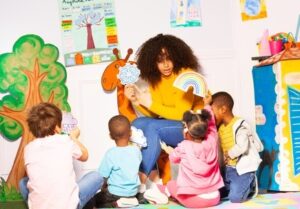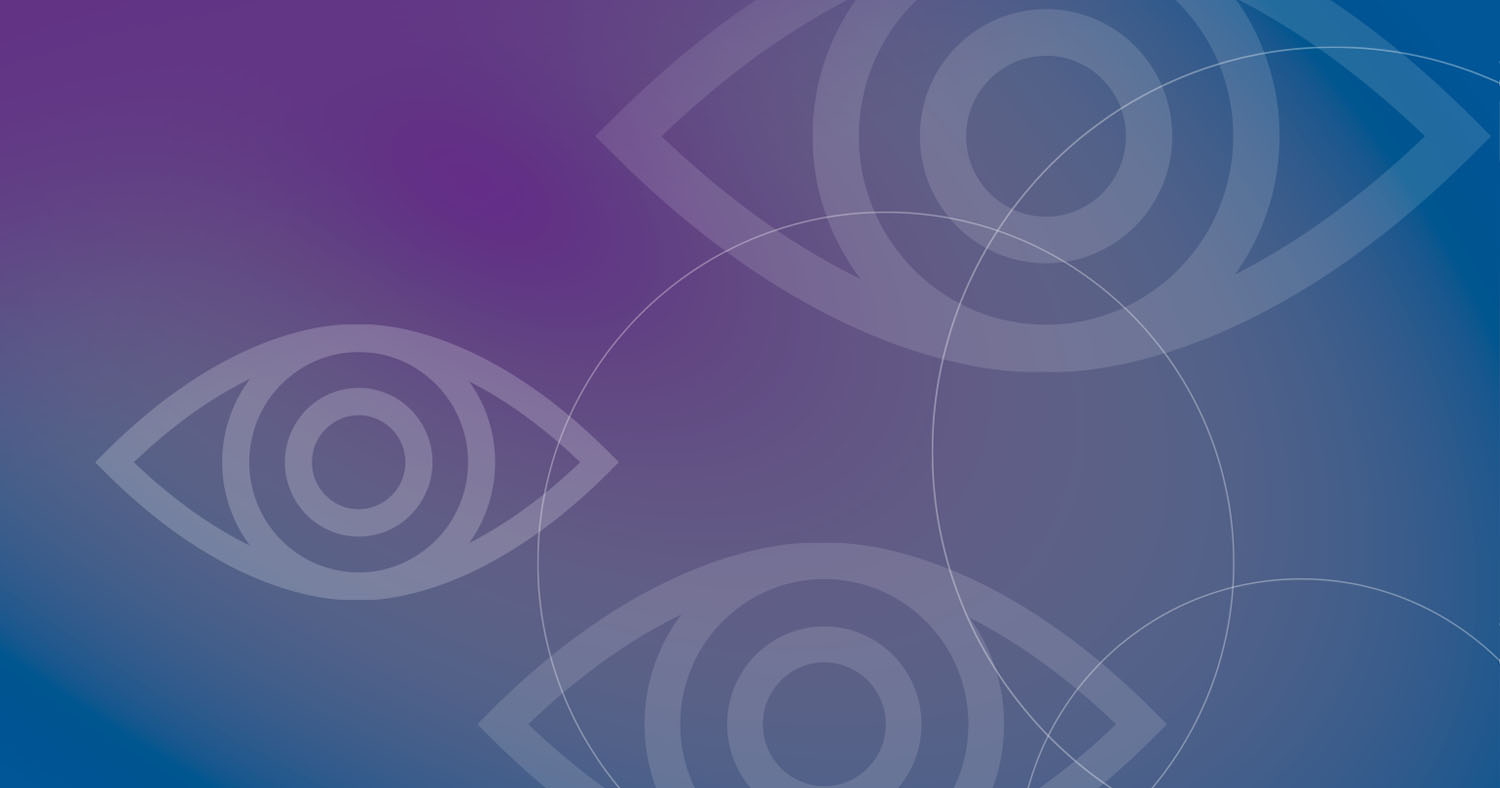A school nurse from California tells a story about her teacher in 2nd grade who called her “ornery” because of her “bad” behavior in the classroom. After a school nurse screened her vision, the school nurse told the teacher to never call this child ornery again . . . she wasn’t ornery . . . she couldn’t see clearly and was disrupting other children in the classroom only because she was asking for help with her school work.
Teachers in a study said they saw improved behavior in children who received, and wore, prescription eyeglasses after a vision screening referral.**
Main Message
Classroom teachers have rules for how children should behave in the classroom.
If your child gets into trouble at school, preschool, daycare, or in a Head Start classroom . . . ask a school nurse, the person in charge of your child’s program, or your child’s primary health care provider, to screen your child’s vision.
Behaviors described here are not always related to vision . . . but they could be.
An undetected and untreated vision disorder is something to consider when the behaviors occur.
A simple pair of prescription glasses could make a difference in your child’s life.
The following stories describe classroom behaviors that could be related to poor vision. Stories and comments are from children, parents, teachers, and a pediatric ophthalmologist. Some stories from children are about getting into trouble for poor behavior because of poor vision. They were less disruptive in the classroom after receiving, and wearing, prescription eyeglasses.
One teacher talked about feeling stressed from taking care of a classroom with students who were disruptive because of their poor vision.* This teacher said, “And then you have more management issues because you are having to manage the people that are then whispering . . . to help them (the child who can’t see)”.*
Another teacher said, “These are the kids that . . . when they had to work independently they were distracting other kids. . . . But when they got the glasses that kind of just changed. It went away.”*
Dr. Pamela F. Gallin, a pediatric ophthalmologist, wrote an op-ed article in The New York Times called “Kids Who Can’t See Can’t Learn”. Gallin wrote that many of the children she and other ophthalmologists examined at a school in the South Bronx part of New York said they knew they could not see the board but didn’t ask someone to check their vision.
If your child mentions problems in the classroom, ask for a vision screening.
Some children know they have problems seeing the teacher or board from the back of the room and will search for a seat at the front of the room. Others don’t . . . and won’t. Instead they may interrupt other students to ask for help. And, they then get into trouble for talking in the classroom.
A teacher said, “But I do see some kids who just don’t say anything and will just stay quiet because they’d rather not call attention to themselves. There’s other kids who say ‘I can’t see!’ and so it does become a management issue when you have to ask them to get up or move somewhere closer.”*
Some children will struggle to see what’s happening at the front of the room . . . or even struggle to see the words in a book on their desks or at their tables.
“Children who struggle to see don’t tend to make for very good students,” Dr. Gallin said.
1. Talking During Learning Activity

Dr. Gallin shared a story about an 8th grade boy who got into trouble for talking during class.
After an eye exam and prescription eyeglasses, that 8th grade boy’s disruptive behaviors stopped.
Why?
He said he was talking in class only because he was asking other students to help him read the board.
2. Noticeably Quiet in Class
Dr. Gallin also shared a story about the opposite of getting into trouble for talking in class.
In this story, the child was noticeably quiet in class.
The child said she was quiet because she stopped looking at the board.
She stopped looking at the board because she couldn’t read the material on the board.
One student said, “I had trouble seeing before I got my glasses. I was shy because my friends would laugh at me.”*
3. “Spacy” and in Her Own World

This story is from a Head Start employee:
“She seemed sort of spacy, as if she were in her own little world, usually a step behind the other students. She would often interrupt story time to come forward and peer at the pictures in the book.”
After receiving a referral from a vision screening, having an eye examination, and receiving, and wearing, prescription glasses . . . the story continues . . . with a happy ending.
“The cutest moment was when she and a friend were walking hand-in-hand around the playground. He was pointing out different things to her, and she would excitably exclaim, ‘I can see that now!’ ”
This child is “now very aware and an active participant of everything that is happening in the classroom and will truly be ready for kindergarten!”
4. Difficulty Sitting Still

This story is from a parent who had concerns about the vision of her younger child because his older brother needed prescription eyeglasses.
The younger son was always up and moving. He wouldn’t sit in her lap and listen when she read a book to him. Instead of watching television with his older brother, he would run around the room.
He received a referral for an eye examination after a vision screening, went to an eye doctor for an eye examination, and received prescription eyeglasses.
Mom said the glasses made an incredible difference for her son.
Now, after receiving and wearing glasses, he sits in her lap when she reads a book . . . from start to finish. He watches cartoons with his older brother . . . without running around the room.
At age 4 years, he is achieving greater success at his daycare. Before the vision screening and eyeglasses, he was “up and moving” during circle time.
“He was kind of a loner before,” his mom said. “He would get bored.” Now he sits and participates in group activities.
She said her son is “now very aware and an active participant of everything that is happening in the classroom and will truly be ready for kindergarten!”
5. Frustrated with Academic Work

A different mom shared this story:
“After he received his glasses, he was like a different child. He seemed happier and less frustrated.”
Mom said before he received and wore his glasses, her son “would become frustrated trying to write his letters or draw. Now he likes to work on his letters.”
The child said, before receiving and wearing his new glasses, “things looked dusty”.
Another student talked about his poor vision, difficulty concentrating in the classroom, and his poor classroom work.
“At school sometimes I get distracted when my teacher starts talking. . . . But when I put (on) my glasses, now I understand my teachers and follow directions and do things right. Before I did things wrong and I needed the glasses to help me.”*
A teacher had this to say about behavior in the classroom after children received, and wore, prescription eyeglasses: “ . . . they persevered at the task rather than giving up. I think the frustration level was so high when they couldn’t really see very clearly; and they strained . . . and they didn’t have the stamina to continue at that level of concentration. But when they got their glasses that kind of disappeared and they were really able to stick to their work a little better.”*
6. Squinting

This story comes from a Head Start employee:
Sally squinted during circle time activities. She did not pass vision screening. She also did not pass a second vision screening.
Sally’s mom immediately made an appointment for an eye examination.
After receiving, and wearing, her new prescription glasses, Sally stopped squinting when she was in circle time doing activities such as the calendar or weather chart.
Some teachers in a study said they saw less squinting and overall better vision after children received prescription eyeglasses following a vision screening referral.**
7. “Clumsiness”

A different Head Start employee told this story:
“I remember clearly one of the first vision screenings I completed. It was on a little girl who we had already realized was very clumsy.
She was prescribed very strong lenses and we immediately realized that her vision was the reason for her clumsiness.
I have realized through these screenings that vision can affect a child’s behavior, balance, and academic performance.”
Summary
If you think any of the children in these stories could be your child, ask for a vision screening from your child’s school, preschool, other program your child attends, or your primary health care provider. A simple pair of prescription glasses could make a big difference in your child’s life.
To-Do List . . .
If your child’s behavior matches any of these behaviors, ask for a vision screening. Your child may need an eye examination and prescription glasses.
Ask your child if “things”, such as toys, the board at school, the teacher in front of the room, or children at the other end of a playground, appear fuzzy or dusty at times and a bit difficult to see. If the answer is “yes”, ask for a vision screening.
If the vision screening results suggest your child should have an eye examination, schedule and attend the eye exam.
If you have insurance that covers the cost of an eye exam, your insurance plan may require you to make an appointment with your child’s primary health care provider to request a referral for an eye exam.
If you don’t have insurance and you are short on money, ask a Lion’s Club in your area for assistance with paying for the eye exam or visit this Prevent Blindness link: Vision Care Financial Assistance Information.
If your child’s eye doctor recommends prescription glasses, buy the prescription glasses, and make sure your child wears the eyeglasses.
References:
*Dudovitz, R. N., Izadpanah, N., Chung, P. J., & Slusser, W. (2016). Parent, teacher, and student perspectives on how corrective lenses improve child wellbeing and school function. Maternal and Child Health Journal, 20(5), 974–983. https://www.ncbi.nlm.nih.gov/pmc/articles/PMC4826825/pdf/nihms743856.pdf
Gallin, P.F. (2015, May 15). Kids who can’t see can’t learn.” The New York Times. https://www.nytimes.com/2015/05/15/opinion/kids-who-cant-see-cant-learn.html?searchResultPosition=1
**Peterseim, M. M., Papa, C. E., Parades, C., Davidson, J., Sturges, A., Oslin, C., Merritt, I., & Morrison, M. (2015). Combining automated vision screening with on-site examinations in 23 schools: ReFocus on Children Program 2012 to 2013. Journal of Pediatric Ophthalmology & Strabismus, 52(1), 20-24.






